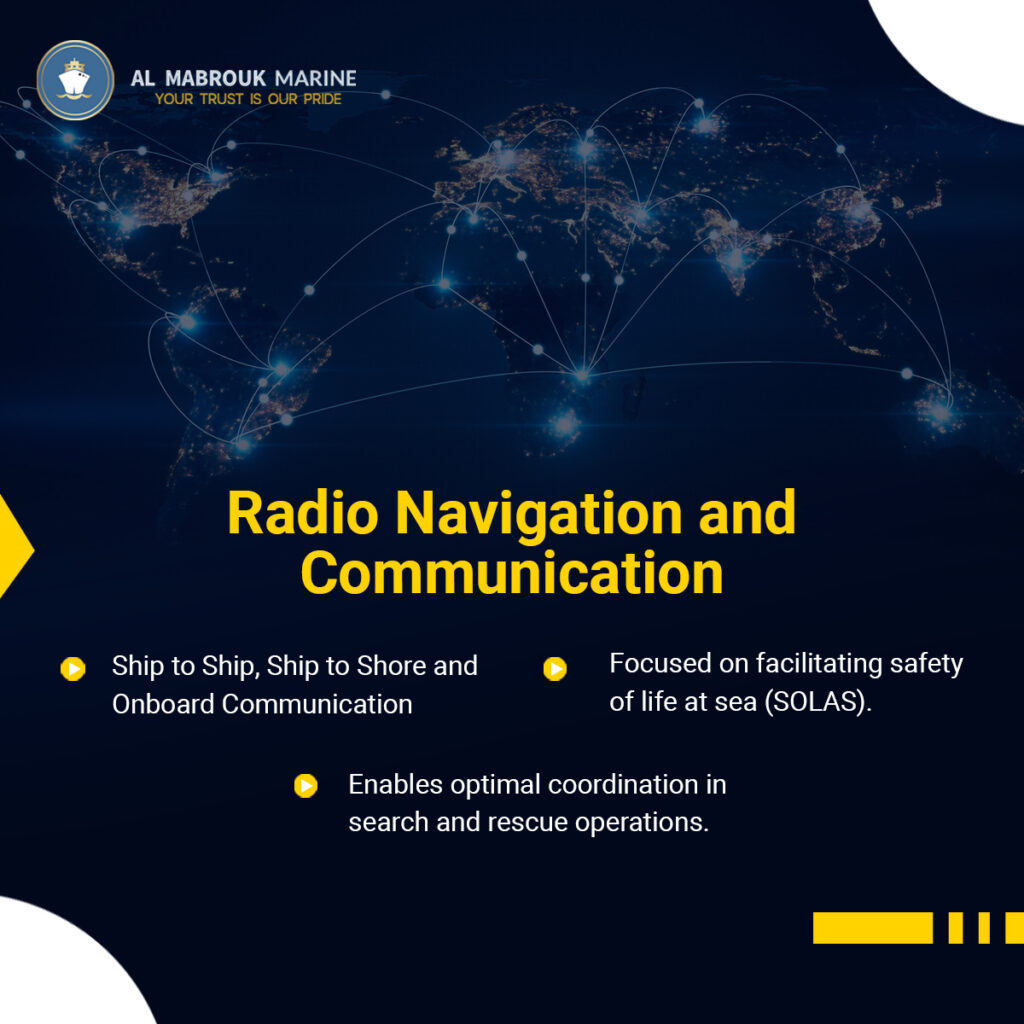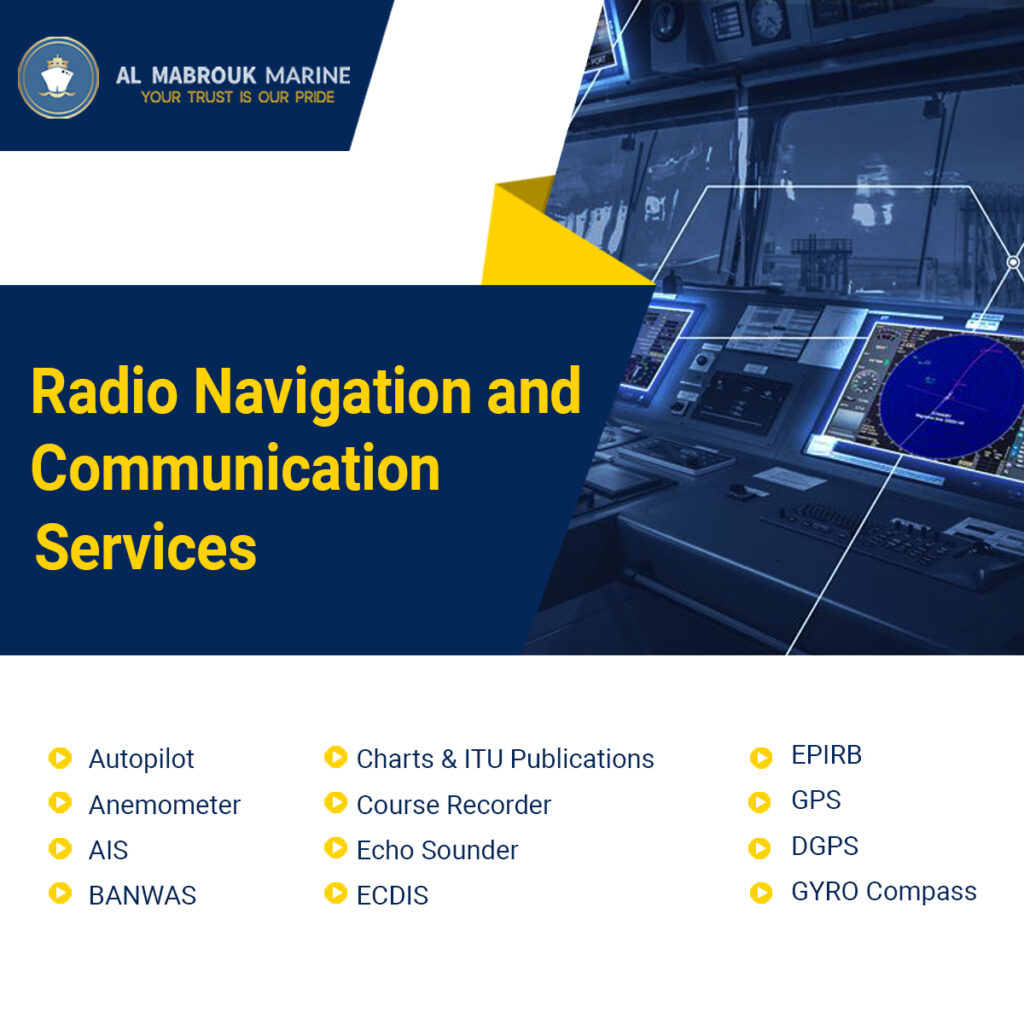How Ships Stay Connected at Sea?
Marine communication has evolved significantly from the early days of shouting between vessels. In today’s maritime industry, staying connected while navigating vast oceans is not just a convenience—it’s a necessity.
Modern ships rely on a combination of advanced technologies such as radio communication, GPS, and satellite networks to maintain constant contact with other vessels, coastal stations, and even family members back home. These integrated systems ensure safety, improve navigation, and support efficient operations in even the most remote areas of the sea.
WHAT IS MARINE COMMUNICATION?
Maritime transport is the backbone of international trade. Around 80% of the world’s merchandise is transported by sea, so it’s essential that safe navigation is a top priority for ships’ captains, as well as for all global economies. For decades, ships’ captains have communicated with each other via radio because it’s an effective and reliable means of communication them. But it can also be a significant risk for the safety at sea. For example, false or incomplete information about a ship’s movements can be more dangerous than no information at all! To improve the maritime community’s ability to exchange data safely, reliably and securely and thus contribute to safer navigation on the open seas over long distances, we have created Auriga, which stands for Automated Reliable Internetwork Guidance that gives immediate insight into every ship’s location and activity – enabling safe maritime industries in new ways never seen before.

Today, mariners use various technologies, including radar, GPS, and satellite navigation, to track their ship’s position accurately. They also rely on radio communication systems like FRS, GMRS, and MURS for real-time conversations or emergencies. This includes having real-time conversations with family and friends back home or calling for help should any kind of emergency arise.
During the seventies, it was apparent that greater thought and research had gone into finding a solution to ship-to-ship and ship-to-shore communication. After IMO assessed the International Telecommunications Union (ITU) study results, ship-to-ship and ship-to-shore communication became possible using VHF radio. At this point, having a radio officer whose only job was to remain awake at all hours monitoring transmissions for an emergency was no longer necessary.
Blessed Marine Automation offers top-tier marine communication services in the UAE.
MARINE COMMUNICATION SYSTEMS USED IN THE MARITIME INDUSTRY
“Radiotelegraphy” was a technology that used radio waves to communicate via Morse code. Around 1900, it became widely used for marine communication, competing with the older system of lamps and flags. Radio communication was an important part of marine documentation in the later stages of the twentieth century. By this time ships were able to send signals about any shortages or other issues that would need to be handled by staff members on board. Today radiotelegraphy is only used for commercial contact with port and shipping services, but can also be used on a smaller scale by private vessels.
Marine communication between ships through the use of marine radios was carried out in ship-to-shore radio stations. Once satellites became a dominant form of communication, the Digital Selective Calling (DSC) system used distress alerts, urgent or safety calls, or routine priority messages, transmitted messages to a receiver for digitally remote control. DSC controllers are now integrated with VHF radios as per conventions from SOLAS (Safety Of Life at Sea).
Satellite-based systems like INMARSAT and COSPAS-SARSAT now play a key role in maritime communication. These systems allow ships to send and receive critical data, ensuring connectivity even in the most remote ocean areas. Emergency Position Indicating Radio Beacons (EPIRBs) also help ships signal distress, improving rescue operations.

The Global Maritime Distress Safety System (GMDSS), established by the International Maritime Organization (IMO), divides the world into four communication zones (A1, A2, A3, and A4) to standardize maritime communication worldwide. As marine communication continues to evolve, satellite-based systems are improving ship connectivity. While these advancements enhance safety and efficiency, the growing number of vessels at sea increases the risk of accidents. Implementing reliable marine communication systems is crucial for reducing risks and ensuring safer maritime operations.
For expert marine communication and navigation solutions, Blessed Marine Automation offers reliable installation, repair, and maintenance services to keep your ship connected and compliant with industry standards.

